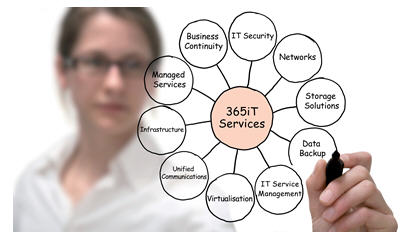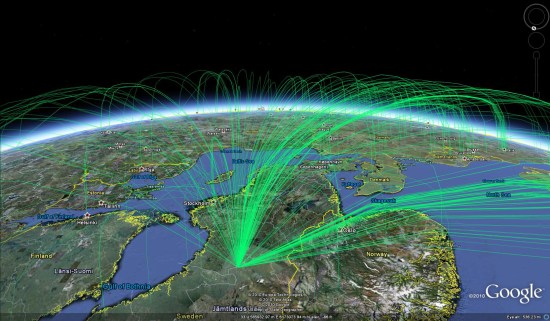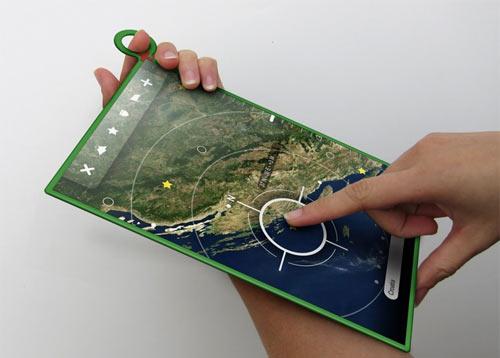"Virtualization" became popular for desktop computers in 2007 as operating systems, memory, and data storage became more affordable. By definition, virtualization is the creation of a virtual rather than actual version of something (Wikipedia).
http://www.365itechnology.com/it-managed-solutions-managed-services/virtualisation-software.html
In practice, it’s a way of partitioning computer memory to set up distinct programs or data sectors on a hard-drive or network servers. The idea is to organize information and software so it’s faster to access as stored memory, expanding the operational potential of different kinds of computational devices.
Virtualized interaction
The entire computational world has now been virtualized. Today, internet resources, wireless networks, and the increased graphical capabilities of electronic devices continue to expand exponentially.
This means information is no longer stored on isolated standalone work stations, programming environments no longer operate from a single server, and many computers are no longer physically connected to a grid.
The result is that users have been literally liberated from their desktops.
http://www.engadget.com/2010/04/07/notion-ink-adam-still-alive-working-on-flash-compatibility/
Instead, a cloud of resources, including thousands of constantly evolving applications, are now available wirelessly on networked devices that fit in the palm of your hand. These little machines are highly mobile, require no mouse or keyboard, and display graphics, motion, and details in ways that are literally impossible to duplicate on ordinary computers.
Virtualized information
Even more important is the variety of open source resources available to these handheld displays. This is best seen in the changing structure of how information is delivered across virtualized networks.
http://www.gearthblog.com/blog/archives/2010/12/wikileaks_around_the_world.html
For example, look at this posting on the Google Earth Blog. It shows how far virtualized information has come. First as a blog article that uses a single web page to explain a complex phenomenon with a simple display of graphical information; second as an animated introduction to the capability of one of the most stunning visual resources on the web (Google Earth); and finally, as a link to emerging virtualized environments that deliver information that behaves as if it has a life of its own (WikiLeaks).
Virtualized cloud
Cloud computing evolved from virtualization and exists as a byproduct of the internet. It offers networked applications as construction tools that draw from the wealth of segmented information now stored anonymously on servers scattered around the world.
A cloud can be private or public. Public clouds like Google, Wikipedia, and RSMeans are available to everybody. This makes them available as common references accessible to an entire project team. As such they help define the scope of work, motivations for project decisions, and research for alternative values.
http://www.constructiondigital.com/industry-focus/building-technologies/cloud-computing-and-construction
Structured clouds like Heavy Equipment 2, American Builders, Craig’s List or eBay are where contractors find and price tools, materials, equipment, and labor. Construction resources are traded daily on these virtualized servers, often with links to detailed manufacturer information in the public sectors of private clouds.
Private clouds are networks or centers that offer proprietary information or software services. Market oriented explanations are used to capture interested users, while subscribers pay a fee for deeper access and technical support.
Examples include, Sage Construction, PrioSoft, and CMO Compliance. The advantages of expert tools based in a private cloud include lower startup costs, transparency and mobility, training and technical support, access to a community of users, and continuous backup and software upgrades.
Virtualized advantages
In the end, design and construction companies are only as successful as their knowledge-base. As such, the cloud works to the benefit of those that can comfortably access its potential, delivering innovative tools and immediate information to the fingertips of a new class of virtualized professionals.
That’s a competitive advantage that’s as true for construction professionals, as it is for medical doctors, research scientists, and high school seniors.
http://en.wikipedia.org/wiki/Sisyphus
As many small and large constructors work hard, struggling to maintain relevance in a quickly evolving economy, it doesn’t take much to see the advantage of such a compelling and flexible new resource.
Virtualized Managers
In just a couple of years, the game has changed. Work stations are now seen to be confining constructors to desktops, blocking the flow of clear project communications. These cumbersome computers are becoming the aging anchors of an office-based technology that keeps team members from the face-to-face-on-the-jobsite interactions required for quick and efficient construction management.
http://www.wired.com/gadgetlab/2010/05/negroponte-promises-75-olpc-slate-by-december/
It’s becoming fairly obvious that we are entering an era of flexible, highly mobile, communicative practices, backed by visual information displays, visible on a clipboard-sized touch pad tablet, wireless connected to a cloud.
.






